ZION & BRYCE (Day 14 - part 5)
Next was Farview Point (elevation 8,819 feet).

Bill records the moment.

We certainly could see quite far! Hidden in the landscape...
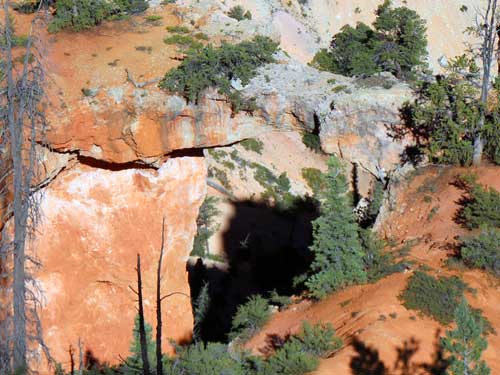
... was Farview Natural Bridge, although it is technically not a bridge but rather a natural arch.

The changing colors of the Navajo Sandstone

The Aquarius Plateau again in the background

This is a view of Kitchen Canyon in neighboring Grand Staircase-Escalante National Monument.


A bit further down the road was Natural Bridge (elevation 8,627 feet). As with Farview Natural Bridge above, this too is technically not a bridge.

A natural arch is formed by the natural, selective removal of rock (by such processes as erosion, freezing & thawing, gravity, chemical weathering or lava flow), leaving a relatively intact frame. There are many different types of natural arches, including natural bridges, alcoves, buttresses, windows, peepholes and even caverns. The different names simply offer us more information such as how it was formed, the size and shape, etc.
A natural bridge is a type of natural arch where a current of water (such as a stream) was the major cause of the opening. This arch here is a window in a fin formed by weathering. Eventually it will collapse, leaving hoodoo pillars.

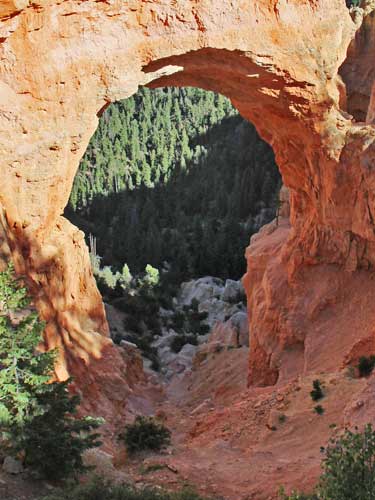
We continued our drive to the end of the road... Rainbow Point.
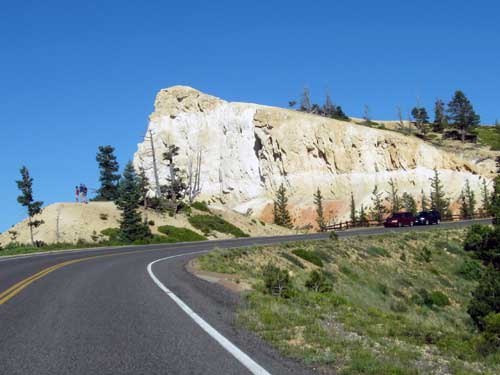

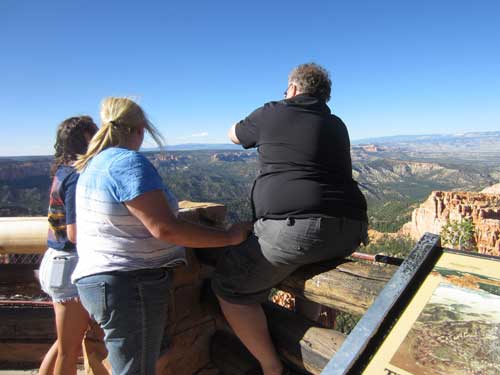
Remember that statistic of one fatality per year? This could be it!
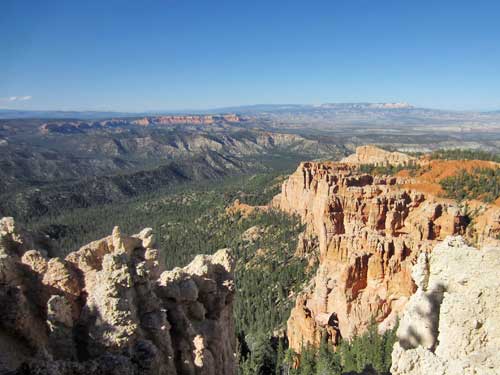

As with all our other previous viewpoints, we find ourselves standing on the edge of the Paunsaugunt Plateau. This is a drainage divide. Behind us, precipitation falls into Great Basin where it mostly evaporates. In front of us (over the rim), precipitation washes into Bryce Creek, which eventually leads into the Paria River, the Colorado River and finally the Gulf of California.
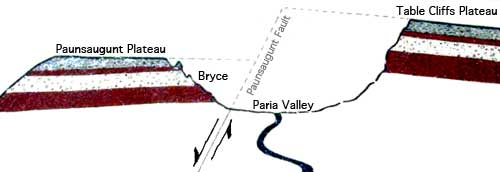


The shelter area was filled with informative signs.

Understanding weathering. Water is the major force shaping the landscape here. Wind has little to no effect. Mechanical weathering includes freeze/thaw cycles as well as running water washing away weathered rock. Chemical weathering also helps a bit as weak acids dissolve the calcium carbonate cement which bonds the particles together.

The types of plants and animals change with the different elevations.
We decided to return to Sunset Point since it was, well, almost sunset. It was still VERY windy!

Many of the fires that have burned Bryce Canyon have been started by lightning.

A male Pronghorn makes his way along the edges of the trees then disappears back into the forest.

As we got out of the car at the parking lot, I noticed a ground squirrel laying up against the curb. It didn't move as I approached and was positioned rather oddly. I found a ranger nearby and told her about it. She suspected it had probably been hurt by a car. When we returned after our outing, the little animal was gone. Either she had scooped it up or it had recovered enough to move on (I'm hoping the latter).

An injured ground squirrel

Joanne and Bill make their way through the Ponderosas to the rim.

The light had certainly changed since our last visit here! Shadows had grown long and the hoodoos started to glow.






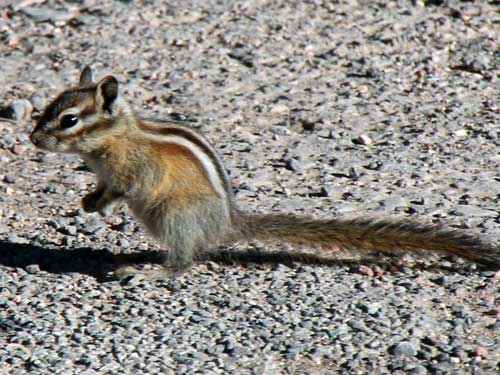
A quick little chipmunk crossed my path. They are much much smaller than ground squirrels and have a stripe across their face (which the ground squirrels don't).
On our way out of the park, we saw a bit more wildlife.

A deer enjoys some grass along the side of the road.

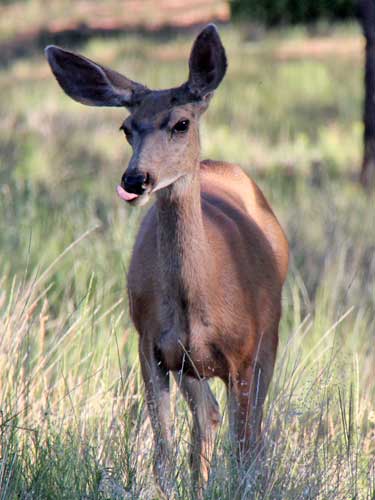
This is her classic National Geographic pose.... and this is when she thinks we aren't looking.

Hmm... I think the grass is better over here.


The prairie dogs were also out enjoying the last few rays of the day.

Of the five species of North American prairie dogs, the Utah Prairie Dog has always been the rarest, with the smallest population and territory. In the early 1900s, they were estimated at 100,000. Today there are only around 7,000. Disease and habitat loss (from development and farming) have been the biggest culprits. It is currently listed as a 'threatened species.' If this prairie dog disappears, so do possibly the 150 other species that depend on them for survival. Long absent from this area, they have been reintroduced into the park.

A quick stop for supplies at Ruby's Inn, located just outside the park

Reuben C. "Ruby" Syrett built a lodge and cabins here in 1916, when tourism to Bryce Canyon was just beginning.
We then retraced our beautiful drive back to Hatch.



Passing Red Canyon
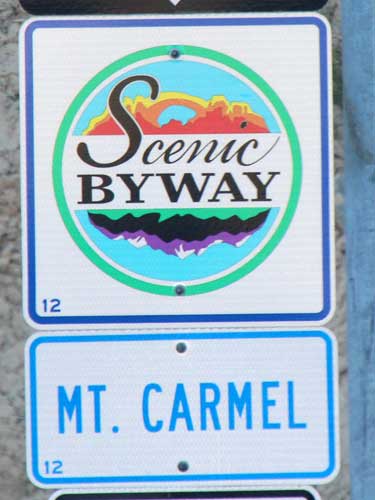
return • continue

